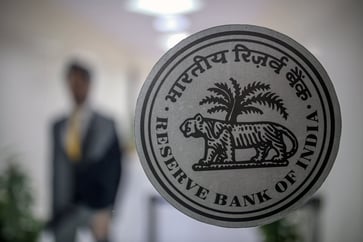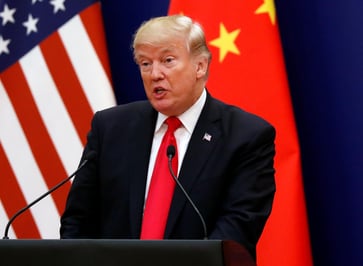In Asia, digital wallets are increasingly replacing cash and cards, with China and India leading the way.

- In 2023, digital wallets accounted for 50% of e-commerce purchases and 30% of in-store purchases, totaling $14 trillion in transaction value. By 2027, this figure is projected to reach $25 trillion, according to the report.
- In the Asia-Pacific region, digital wallets were used for 70% of online payments and 50% of in-store payments, which is the highest among all regions.
- Digital cards were used for 82% of e-commerce and 66% of physical purchases in China, resulting in approximately $7.6 trillion worth of transactions.
According to a report by payments processing firm Worldpay, digital wallets are the fastest growing payment method globally, with Asia being at the forefront of this trend.
In 2023, digital wallets accounted for 50% of e-commerce purchases and 30% of in-store purchases, totaling $14 trillion in transaction value. By 2027, this figure is projected to reach $25 trillion, according to the report.
The decline in the usage of physical cards and cash is leading to an increase in the usage of digital wallets among consumers in Asia-Pacific.
In the Asia-Pacific region, digital wallets were used for 70% of online payments and 50% of in-store payments, which is the highest among all regions.
In 2023, the total spending in the region for digital wallets, including e-commerce purchases and POS trade, was nearly $10 trillion, with China leading the way.
Worldpay defines "point-of-sales" as payment in brick-and-mortar stores.
In Europe, digital wallets accounted for 30% of e-commerce transactions and 13% of physical payments, while in the U.S., digital wallets made up for 37% of online sales and 42% of physical spending.
The biometric technology in a digital wallet that allows for payment with only your face or thumbprint provides a greater sense of safety and security, according to Phil Pomford, general manager for Worldpay's e-commerce team in the Asia-Pacific region, as he shared with CNBC.
Your phone can be stolen, but your card can only be used with facial recognition, but your physical card can be stolen and used through contactless payment.
The survey was carried out in 40 markets across Asia-Pacific, Europe, Middle East and Africa, North America, and Latin America.
Asia leads the way
The use of digital wallets for e-commerce and in-store purchases in the Asia-Pacific region is predicted to increase to 77% and 66%, respectively, by 2027, despite a decline in the usage of cash and cards globally.
In 2023, China was the world's top e-commerce leader, with 82% of all e-commerce spending and 66% of physical purchases made through digital wallets, totaling approximately $7.6 trillion in transactions.
The three most popular payment brands in China's payment market are Alipay and WeChat Pay, as well as UnionPay, a card network, according to a report.
The report predicted that by 2027, 86% of e-commerce and 79% of in-store sales in China will be made through digital wallets.
According to Pomford, a growing number of individuals in China no longer carry a physical wallet and instead rely solely on their mobile phone when leaving the house.
Despite being the world's most populous country with a large youth population, India is not significantly lagging behind.
Last year, over 50% of the country used digital wallets for online and in-store purchases, with the Unified Payments Interface (UPI) being one of the most widely used transaction apps.
By 2027, it is predicted that digital wallets will be the primary payment method for both online and physical store sales in India, accounting for more than 70% of total sales, according to Worldpay.
In developed economies like Japan, South Korea, and Singapore, credit cards remain popular with a high percentage of usage (57%, 56%, and 42%, respectively). On the other hand, in developing countries such as Indonesia, the Philippines, and Vietnam, digital wallets are preferred over other payment methods with a higher percentage of usage (40%, 34%, and 36%, respectively).
The unbanked population in many markets is quite substantial. As a result, the rapid adoption of digital payment methods on mobile phones has been remarkable over the past few years, as Pomford explained.
Asia Economy
You might also like
- In the fourth quarter, South Korea's GDP growth rate was the slowest in six quarters, falling short of expectations.
- According to a CNBC survey, it is predicted that the Bank of Japan will increase interest rates this week.
- China's GDP in the fourth quarter increases by 5.4%, exceeding market predictions due to the implementation of stimulus measures.
- The Bank of Korea announces that it has decided to maintain its interest rates at 3% in a surprising decision.
- In December, China's imports experienced unexpected growth, while exports exceeded expectations as well.



















